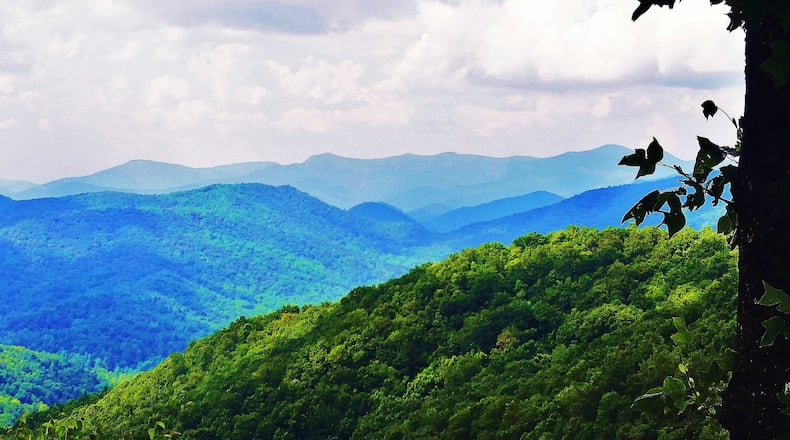Like many of us, I needed a break last weekend from all the turmoil and upheaval rocking our world. And what better way to escape, I decided, than to drive one of the most remarkably beautiful routes in Georgia and perhaps the entire Southeast, the Richard B. Russell Scenic Highway (Ga. 348).
It was built in 1939 partly for that purpose — to provide a temporary release from the hustle and bustle of everyday life. Dipping, rising, winding and curving for 14 miles, it runs through the lush Chattahoochee National Forest and offers magnificent views of some of Georgia’s most spectacular mountain scenery.
Along the way last weekend, I stopped at the turnout at the 3,480-foot-high Hogpen Gap, the highest point along the scenic route. Sitting in my lawn chair there, I drank in the fresh mountain air and gazed long at the rugged valley stretching in front of me as far as the eye could see.
There is something about breathtaking mountain vistas such as this that uplift the human spirit and refresh a weary mind. The peaceful valley is called Lordamercy Cove, supposedly named for its difficult terrain. But some folks say the name also comes from the exclamation people utter when they first see the unspoiled vista.
Hogpen Gap also has another distinction: It marks the Blue Ridge Divide. Water flowing west from here drains into the Tennessee River, and east, into the Chattahoochee River.
And there is something else: Directly across the road from the Hogpen Gap turnout is a stunning sheer cliff — nearly 60 feet high in some places — of banded gneiss, a metamorphic rock that’s the most common rock in the Eastern Blue Ridge. The stunning rock wall stretches several hundred feet along the highway.
During most of the year, water dripping from springs keeps the natural wall constantly moist, creating a unique habitat in which certain ferns and wildflowers thrive. One of the wildflowers is the cliff saxifrage that roots in cracks in the rock. It produces small, delicate white flowers adorned with red and yellow dots that make the blooms seem like dancers when buffeted by a breeze.
IN THE SKY: From David Dundee, Tellus Science Museum astronomer: The moon will be in last quarter Sunday night. Mercury is low in the east just before sunrise. Venus is higher in the east and rises about two hours before sunrise and will appear near the moon next Friday morning. Mars rises in the east about midnight and will appear near the moon Saturday night. Jupiter and Saturn rise in the east just around sunset.
About the Author
Keep Reading
The Latest
Featured


